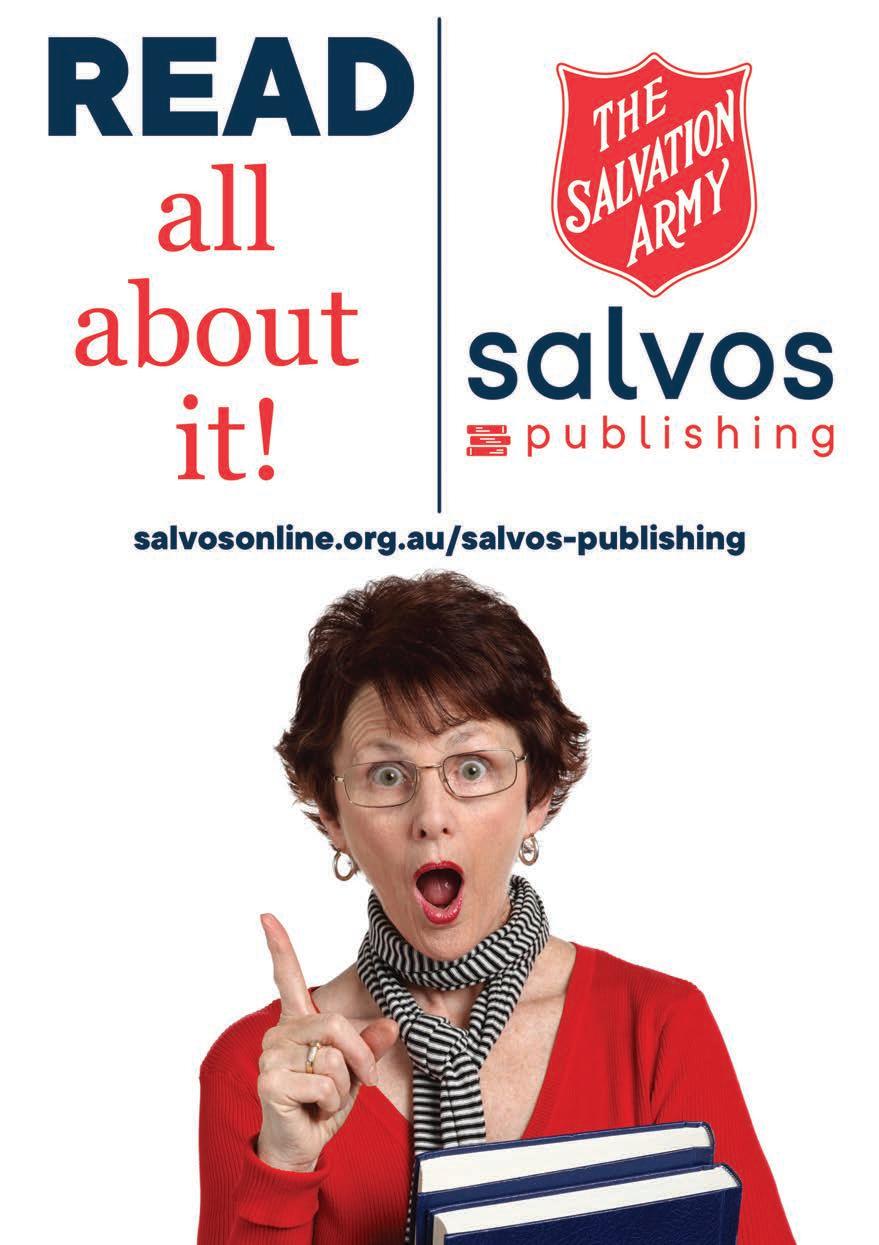
Vol. 005 | No. 18 25 May 2024 AUD $1.00 PRINT POST APPROVED PP100001474 salvosonline.org.au FEATURE Five minutes of social justice NEWS Salvos urge model expansion OUR STORY National RAP expands for 2024 One generation at a time Finding a role in reconciliation
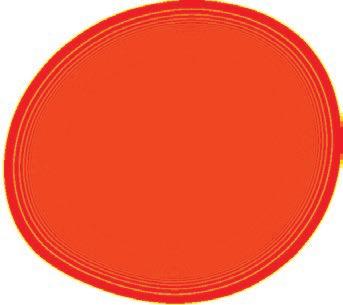


The Salvation Army is about giving hope where it’s needed most.
What is The Salvation Army?
The Salvation Army, an international movement, is an evangelical part of the universal Christian Church.
Vision Statement
Wherever there is hardship or injustice, Salvos will live, love and fight alongside others to transform Australia one life at a time with the love of Jesus.
Mission Statement
The Salvation Army is a Christian movement dedicated to sharing the love of Jesus by:
• Caring for people
• Creating faith pathways
• Building healthy communities
• Working for justice

The Salvation Army Australia acknowledges the Traditional Owners of the land on which we meet and work and pay our respect to Elders, past, present, and future. We value and include people of all cultures, languages, abilities, sexual orientations, gender identities, gender expressions, and intersex status. We are committed to providing programs that are fully inclusive. We are committed to the safety and wellbeing of people of all ages, particularly children.
Salvos Magazine
Founders William and Catherine Booth
Salvation Army World Leaders
General Lyndon and Commissioner Bronwyn Buckingham
Territorial Leader Commissioner Miriam Gluyas
Secretary for Communications and Editor-In-Chief
Colonel Rodney Walters
Publications Manager Cheryl Tinker
Editor Simone Worthing
Graphic Designer Ryan Harrison
Enquiry email publications@salvationarmy.org.au
All other Salvation Army enquiries 13 72 58
Press date 10 May 2024
Printed and published for The Salvation Army by Commissioner Miriam Gluyas at Focus Print Group, South Granville, NSW, Darug Nation lands.

salvosonline.org.au

Faith Talk [10]
Reconciliation:
The heart of the Gospel

Feature [4]
One generation at a time

Our Story [12] Beyond tokenism and lip service
Now more than ever
Australia is about to start observing National Reconciliation Week (27 May-3 June). The theme this year is ‘Now more than ever’ – a reminder to all of us that the fight for justice and the rights of Aboriginal and Torres Strait Islander people must continue.
This edition looks at the reflections of some Indigenous and non-Indigenous Australians around the meaning of reconciliation and the importance of a just, equitable and united nation. The ‘Five minutes of social justice’ column also provides some ideas on what we can all do to help move our own understanding, and reconciliation in general, a step forward.
It’s not always easy to do, and it can bring a personal cost. However, as Lucy Davis shares, very little is changing for Aboriginal and Torres Strait Islanders and they feel let down, ignored and deeply hurt.
Lucy also shares that, if we genuinely seek reconciliation “now more than ever”, the healing, hope and unity that it would bring, is worth the cost.
Let the movement continue.
Simone Worthing Editor
3
CONTENTS

One generation at a time
Finding a role in reconciliation
By Anthony Castle
I see a figure between myself and the road. They sit between the trees, fixed in place, the flow of traffic behind them. Their arms reach out, as if they are holding something. I approach.
It is a statue of a mother, their head bowed. Their hands are empty, and I wonder if the statue is incomplete, if it is missing something. I come to a stop as I realise they are. They are missing their children.
THE GRIEVING MOTHER
I am standing before the statue of the Grieving Mother, visiting Colebrook Reconciliation Park. Once the site of Colebrook Home, an institution for Aboriginal children who were forcibly removed from their families, the park is now a memorial with the children’s stories recorded as audio testimonials. The statue of the mother sits in the scrub, a busy road cutting through the Adelaide foothills alongside. I look into the emptiness between the statue’s hands. I hear nothing but traffic.
I didn’t know how to write this story when I was asked.
“We don’t need another white Australian opinion on the Stolen Generation,” I thought. It is not as if I don’t care, but it is the actions of white Australians like me that has created these problems, caused such loss. I am not sure what I have to say. I have come to this park, but the question remains; what is my place here?
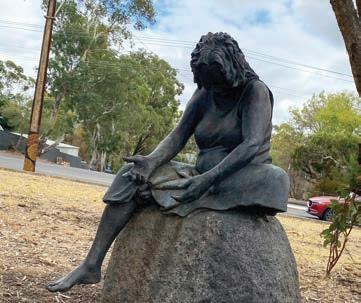
NEVER CAME HOME
The Stolen Generation were the Aboriginal and Torres Strait Islander children who were taken from their families by federal and state governments and church missions. The purpose of this policy was to assimilate Indigenous children into white Australia. The 350 children who lived at Colebrook Home were removed from their communities from all over the country. Government reports have found that children were taken from caring and able parents. Most of these children never came home.
Official estimates found that as many as one in 10, or even one in three, Indigenous children were taken from families between 1910 and 1970. Many suffered the trauma of separation into their adult life, with high incidences of depression, PTSD and suicide, and alcohol abuse. It has been an intergenerational trauma.


FEATURE
SALVOS MAGAZINE 4
While the Australian Government has apologised for those policies, Indigenous children are 10.5 times more likely to be removed by the state and in out-of-home care than their non-Indigenous peers. As of last year, there were over 22,000 Indigenous children in care and there are more Aboriginal and Torres Strait Islander children removed from their families today than throughout the stolen generations.
OVERWHELMING LOSS
Earlier this year a 10-year-old Aboriginal boy under the care of the state died by suicide in Western Australia, having allegedly been taken from their family who couldn’t pay their rent during the pandemic. Aboriginal children are still being taken, the trauma continuing. Some of them never come home.
I speak with Maria Anderson, an Aboriginal and Torres Strait Islander Engagement Coordinator for The Salvation Army, about Colebrook Reconciliation Park. She shares its story and instructs me to go myself. I go and look into the mother’s empty hands. I play the recordings of those who were taken, further from the road cutting through Kaurna Land. You can listen to


their voices away from all the traffic. The loss is overwhelming.
SO MUCH MISSING
Sometimes Australia feels like a busy road cutting through country. It’s noise and traffic, always moving forward regardless of the history, of the grief, alongside. We build roads and houses and cut mines and have elections over and over with such loss in our past, so much incomplete, still missing.
I decide to visit Colebrook Reconciliation Park again with my son. I hold his hand in mine as we approach. White Australians like me don’t have solutions. This isn’t our story primarily, but we do have a place here. Our place is to stop and see the grief, not to find something to say, but to listen to the voices of Aboriginal and Torres Strait Islanders and to teach our children to do the same until the crimes of yesterday no longer continue. We must stop and see what is missing before reconciliation can be found, one generation at a time.
Scan here for information on National Reconciliation Week.


FEATURE
25 M Ay 2024 5
Thinking about reconciliation
Australia will observe National Reconciliation Week this year, as always, from 27 May-3 June. The theme this year is Now More Than Ever. Recently, Salvos Studios asked a few people what they think about reconciliation. Their responses are below.

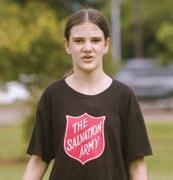


• When I think of reconciliation, I want to see more collaboration between Indigenous and non-Indigenous Australians.
• When I think about reconciliation, I want to see more effort put in.
• I want to see more empathy.
• I want to see more listening and more love.
• I’d like to see more action and less talk.
• I would like to see more collaboration with the people that are really affected by what’s happening in Australia.
• I want to see more listening, and more appropriate people being involved in the conversations.


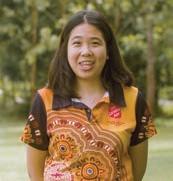

• I want to see a better future for the next generation. I want to see us coming together as one people.
• I want to see more open communication between both parties.
• I would like to see more understanding and less stereotyping.
• Jesus encourages us as his followers to be together and stick together, to be reconciled and to be reconcilers, so as his followers, we can live in reconciliation and bring people together.
Scan here for more information on The Salvation Army’s Indigenous ministries.
SALVOS MAGAZINE 6 FEATURE


Five minutes of social justice –Aboriginal and Torres Strait Islander disadvantage
Social justice means different things to different people, but it generally includes the idea of a society being fair and equitable.
In Australia, social justice challenges are multifaceted, including issues such as poverty, homelessness, Indigenous rights, and discrimination based on factors like race, gender, disability, and socioeconomic status. Some of the issues in Australia are huge and will take a lot of effort to fix – but all of them can be made better.
As we approach the annual National Reconciliation Week this year (27 May3 June), this segment of ‘Five minutes of social justice’ looks at the issue of Aboriginal and Torres Strait Islander disadvantage and the difference we can make as an individual, community, state or territory, or as a nation.
Aboriginal and Torres Strait Islander people are part of the oldest living culture in the world, but they are also amongst the most disadvantaged Australians. Aboriginal and Torres Strait Islander communities experience lower life expectancy and poorer health outcomes, while encountering higher rates of infant and maternal mortality, family and domestic violence, suicide and incarceration.
There are both historical and current contributors to this disadvantage and the experience of colonialism and suppression of Aboriginal and Torres

Strait Islander cultures have an ongoing negative effect on people from these cultures. Many of the drivers of disadvantage are systemic and structural.
GOT FIVE MINUTES?
• Look up your traditional owners of the land you live on at Find Your Traditional Owners aiatsis.gov.au/ whose-country
WANT TO DIG DEEPER?
• For more information, resources and activities, check out reconciliation.org.au/our-work/ national-reconciliation-week/
Scan here for information on National Reconciliation Week.
FEATURE
25 M Ay 2024 7
Salvos urge model expansion
The ongoing commitment to address family violence
The Salvation Army’s General Manager of Family Violence, Lorrinda Hamilton, has recommended expanding the Salvos early intervention program, the Alexis Family Violence Response Model, which only operates in Victoria.
Her comments come after The Salvation Army welcomed the Albanese Government’s announcement earlier this month, that the Leaving Violence Payment will now be permanent.
The Alexis model was developed in conjunction with Victoria Police 10 years ago to address the critical need for a more coordinated, effective and specialist response to family violence, particularly when there is a serious level of risk.
SAVING LIVES
The Alexis model specifically targets families experiencing repeat incidents of violence where multiple, complex and intersectional vulnerabilities impact their ability to engage effectively with mainstream services.
The model provides a whole-of-family response, working towards reducing risk to women and children and holding perpetrators of family violence to account.
“We know programs such as Operation Alexis save lives,” Lorrinda said. “A great start would be to have this rolled out nationally, to ensure that not only victim-survivors get the help they require, but also the perpetrators of such violence are given opportunities to engage in behavioural change.”
A DANGEROUS CHOICE
Of all family and domestic assault hospitalisations in 2021–22, 73 per cent (4700) were for females, and 27 per cent (1700) were for males, according to the Australian Institute of Health and Welfare.
“We know one of the main reasons women stay in violent relationships is that they are placed in the precarious situation of choosing between poverty and safety,” Lorrinda said. “While the $5000 payment certainly alleviates some of that stress, it does not address women’s long-term needs. Ensuring that working age payments, especially JobSeeker and youth Allowance, are adequate to cost of living is critical to women remaining safe.”
SALVOS RECOMMENDATIONS
The Salvation Army is also seeking an immediate increase in investment in frontline services, including:
• An increase in crisis and transitional accommodation for victim-survivors.
• Increased investment in primary prevention, early intervention and community education.
• Investment to diversify intervention approaches for persons using violence.
• An increased number of specialist services that support children and young people exposed to, or who have used violence.
The Salvation Army is deeply committed to addressing family violence in
SALVOS MAGAZINE 8
NEWS

Australia. It continues to deliver specialised services around the country for men, women and children, including programs, refuges, case management, supported accommodation, early intervention and brokerage programs.
MEN’S SERVICES
Abuse and violence towards an intimate partner or family member is an ongoing crisis in Australia, with women experiencing violence at the hands of an intimate partner at a much higher rate than men.
However, men can often experience violence at the hands of an intimate partner or family member, too. If you are experiencing violence, there is help available to you. Call 1800 RESPECT or scan the QR code below and search ‘men’s services’.
Scan here for more information on Salvation Army Family and Domestic Violence Services.
CHANGE IS POSSIBLE May is Family and Domestic Violence Awareness and Prevention Month. Everyone can play a part in raising awareness and preventing domestic and family violence (FDV) by pledging to:
• See the signs
• Act in response to violence
• Face up, leading by example
• Educate to prevent FDV
For more information and resources, and, if you’re interested, to sign a pledge to help make change possible, scan the QR code below.
Scan here to sign a pledge to make change possible
9 NEWS
25 M Ay 2024
Reconciliation: The heart of the Gospel
Following the roadmap to genuine change
By Lucy Davis
The road to reconciliation is not one with directions or instructions. I have been in the reconciliation space for many years, starting my career working for Catholic Education, then for the last eight years at The Salvation Army as the Reconciliation Action Plan and Projects Manager.
We at the Salvos have just completed our First National Reconciliation Action Plan (RAP), completing 89 deliverables. I am very proud of our RAP; the changes that we have made to support and empower mob to want to work at the Salvos is literally award-winning. We are the recipients of the Seek 2024 Social Inclusion Best Diversity and Inclusion Initiative, and we are now a finalist in the Queensland Reconciliation Awards for our Christmas Cheer initiative in First Nations communities. It is an outstanding achievement, but one that has not come without reflection on our ministry and reflection on ourselves.
According to Reconciliation Australia, there are over 3000 RAPs across the country. The RAP framework directs organisations to create tangible outcomes in four areas: respect, opportunities, relationships and governance. The annual RAP Impact Report suggests that we are moving in leaps and bounds towards reconciliation in this country; but why do so many First Nations mob feel so defeated, and feel like we are
not progressing, especially after the results of the Referendum?
I am challenged by questions of my own like, ‘How can I reconcile with God if those who I call my brothers and sisters in Christ don’t want to reconcile with me, or in this case, even hear my voice?’
UNDESERVED GRACE
I must constantly remind myself that reconciliation is the heart of the Gospel: that God has chosen to reconcile me to himself, and that in turn, I have a responsibility as a follower of Jesus, to become reconciled to those around me.
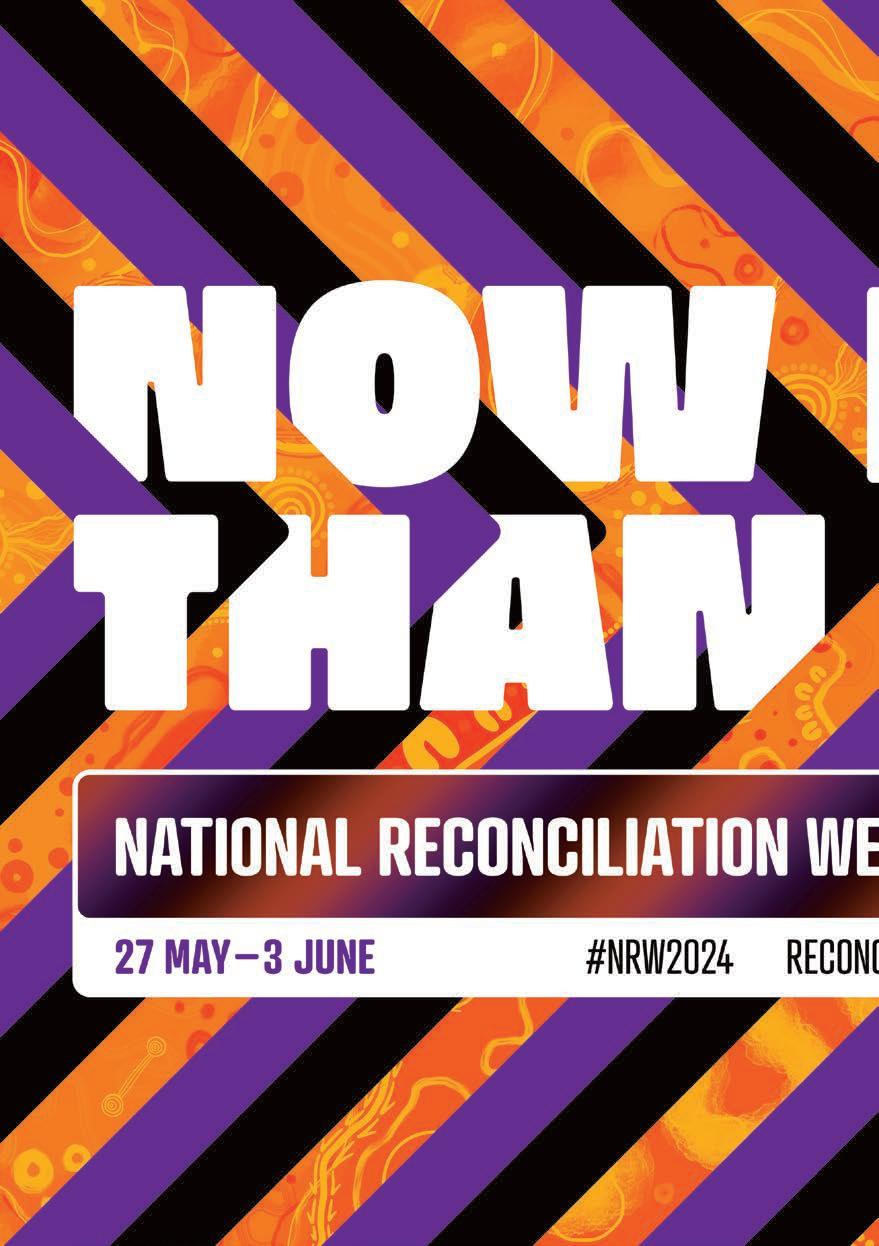
Reconciliation is the heart of the Gospel…
The Gospel of Jesus Christ is the story of a merciful God who provides the sole means of grace, pardon, and forgiveness to a fallen and rebellious creation (Ezekiel chapter 18, verses 23, 32). He sent his son, the Lord Jesus Christ, to this world to carry out the mission of rescuing us (Isaiah chapter 53: verses 5-6; John chapter 3, verse 16;). The term for this undeserved act of grace is reconciliation.
FAITH TALK
SALVOS MAGAZINE 10

We at the Salvos need to evaluate whether our RAP is having an impact in communities we are working in and how we can empower the local voices in those communities, as they are the ones who know what is best for their mob.
ACTUAL CHANGE
As brothers and sisters in Christ, we need to look at our relationship and decide what changes need to be made. If this journey of reconciliation is about walking together, then one of us must decide who has the most blisters on our feet.
The Salvation Army’s presence in this space is crucial as our services and programs report high rates of First Nation participation.
I have concluded that reconciliation cannot be looked at through the same lens anymore. Reconciliation needs to be unpacked with mob initially, and with other faith-based leaders.

RAPs can be successful if the internal structures are changed to allow First Nations voices to speak into the space all the time, not just during National Reconciliation Week or NAIDOC (National Aborigines and Islanders Day Observance Committee) Week.
The Uluru Statement brought us a roadmap for change; it brought us a roadmap to reconciliation with outcomes that would bring meaningful change to First Nations people and our communities, but it also brought, and still brings, a gift to the Australian people to walk with us in a movement of the Australian people for a better future. The movement must continue.
Scan here for more information on The Salvation Army’s Indigenous ministries.
FAITH TALK
25 M Ay 2024 11
PHOTO BY VLADIMIR HALTAKOV ON UNSPLASH
Beyond tokenism and lip service
Salvos plan next phase of Reconciliation Action Plan
By Anthony Castle
The Salvation Army Australia has completed the Innovation stage of its national Reconciliation Action Plan (RAP). Launched in December 2020, The RAP has been driven by Strategic Manager Lucy Davis, who first came to the idea as a sceptic.
“We needed to have a national RAP, and I said I’d do it on the basis that we were actually going to make change,”
Lucy explains. “We wouldn’t want it to be a token document. Black fellas can sometimes be opposed to RAPs for that reason, so I was determined to make our own RAP the opposite. I told them so, and I still got the job.”

A RAP is a framework for an organisation to contribute to the reconciliation movement. RAPs deliver tangible and substantive benefits for First Nations peoples. During 2020-21, more than 1200 Salvos gathered in yarning circles online, expressing a desire to see things change.
“We started by saying ‘what are we doing now, and what we can do better?’” Lucy says. “COVID had hit so we had to try to do it all online in our homes, making sure we had local voices and corporate voices. There was a real expectation to come with grace, to leave preconceived thoughts prior to coming to the circle, and that together we would yarn this out.”
SALVOS RESPONSIBILITY
The Salvation Army recognises that its collective actions must develop relationships of mutual respect, and maintain a commitment to truth and accountability with Aboriginal and Torres Strait Islander peoples.
“If you don’t get this right, there’s disconnection from country and spirit, disconnection from the First Peoples of the land,” says Lucy. “I think it’s different for faith-based organisations, because they played a massive part in disrupting Aboriginal communities and homes. There are significant disadvantaged communities in Australia that The Salvation Army either set up or played a role in operating. We have a responsibility to those people who now live in intergenerational trauma. This
SALVOS MAGAZINE 12 OUR STOR y
Lucy Davis discusses the RAP at a recent Salvos conference.
is exactly where Jesus would want us to be. This is his bread and butter.”
NOT JUST “LIP SERVICE”
The RAP has impacted key areas of The Salvation Army’s engagement with First Peoples. The Burra Burra network now allows First Nations personnel to connect and feel welcomed. The Recruitment and Retention working group updated the recruitment process, and the number of Aboriginal and Torres Strait Islander candidates hired is up by 40 per cent.
“We needed progressive change and structural change,” Lucy says. “Action makes movement, it isn’t just lip service. There are measurable, tangible outcomes, and when something hasn’t worked, we asked, ‘could this be done better?’”
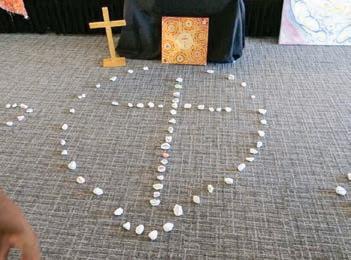
have an active target for Aboriginal and Torres Strait Islander employment, to review the organisation’s Closing The Gap strategy, and to develop and undertake a truth-telling process in communities.
Action makes movement, it isn’t just lip service.
A significant milestone achieved during the RAP period is the establishment of a ‘Truth Telling‘ framework.
“On paper our RAP looks really good, and we are ticking all the right boxes, but if we are not having an impact to First Nations people in the communities we work in, then we have to look at how we measure success,” Lucy says.
NEXT STEPS
The Stretch RAP consultation began in March this year, with the next stage to be launched in August. Key targets will be to engage First Peoples in every community where The Salvation Army is present, to
“Next is truth-telling, repair, and justice,” Lucy explains. “We have to go on this scary journey of truth-telling, about where our footprint has been as a Christian movement. We have to start engaging in those yarns, to accept it, and work together to rectify the situation we’ve been a part of.”
The Salvation Army’s vision for reconciliation is to be a faith movement committed to social justice, equity and freedom.
“I prefer to look at Jesus moving from place to place,” Lucy says. “We need to be the doers and goers in the background, empowering local voices, who are the experts on their community.”
For the full version of this story, go to www.salvosonline.org.au/post/reconciliation-action-plan-moves-to-next-level
Scan here to read more stories of hope.
13 OUR STOR y
25 M Ay 2024
Reconciliation is at the heart of the Gospel.
Honey and sultana scones
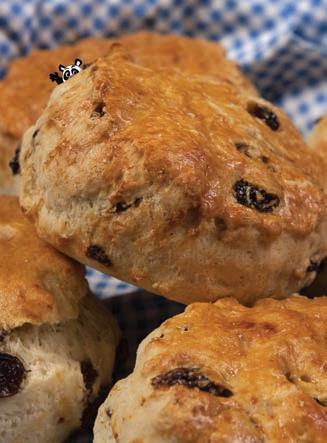
Ingredients
½ cup natural yoghurt, 1 tbsp honey, ½ cup milk, 3 cups self-raising flour, ½ tsp salt, ¾ cup sultanas
Method
• Combine yogurt and honey in bowl.
• Beat in milk, flour and salt.
• Stir in sultanas and knead dough on a lightly floured board, rolling out to 1½ cm thick.
• Cut out with a 5cm-round cutter or lightly floured glass. Place on a greased baking tray.
• Glaze with a little milk and bake at 200°C for 10 minutes, until golden brown.
• Serve with butter.

Quick quiz
Which Australian capital city has the least daylight on the shortest day of the year?
2. Recorded in Charlotte Pass in 1994, what is Australia’s lowest recorded temperature?
3. Which Australian capital cities are most likely to see snow within only 50kms of the city centre?
4. Which Australian capital city enjoys almost the same temperature year-round, and only has two seasons, wet and dry?
5. In 1924, the Western Australian town of Marble Bar set a world record. What was it?
6. Only found in Western Australia, what is a Fremantle Doctor?
Bible“Make allowance for each other’s faults, and forgive anyone who offends you.”
Colossians chapter 3, verse 13. New Living Translation
On which page of this week’s Salvos Magazine is Tum-Tum hiding?

SALVOS MAGAZINE TASTE OF LIFE 14 TASTE OF LIFE
byte
Words are hidden vertically, horizontally, diagonally, forwards and backwards.
Enjoy!
Avalanche
Beanie
Blizzard
Boots
Chilly
Cold
Fireplace
Freezing
Frostbite
Gloves
Heating
Hibernate
have a laugh
How do mountains stay warm in winter? They put on their snowcaps.
What bites but does not have teeth? Frost. What did the wool hat say to the scarf? You hang around while I go on ahead.
Icicle
Igloo
Jumper
Leafless
Overcoat
Penguin
Scarf
Shiver
Snowman
Snuggle
Subzero
Toboggan
US country music legend Dolly Parton once entered a Dolly Parton lookalike contest – and lost. To a man! She tells the story often.
Dolly refuses to ride the rides at Dollywood, as she has motion sickness and a fear of roller coasters.
‘Jolene’ was written about a red-headed bank teller who used to flirt with Dolly’s husband. Dolly has written over 3000 songs.
When Dolly was born, her parents were so poor they paid the doctor with a bag of oatmeal for his services.
Tum-Tum: is hiding amongst the scones on page 14.
Darwin, NT. 5. Most consecutive days of 37.8ºC or over. 6. A summer breeze that originates in the Indian Ocean, generally about 3-4pm.
answers: 1. Hobart 2. -23º 3. Hobart and Canberra.
15 TAKE FIVE 15
Quiz
4.
Wordsearch
C B P S G S N U G G L E S A K S M Z B Z S X U E V I T K U V Z C L G F L I S A M T C O O B A Y O P L F I I G R Y X I B X Z L S L D O E R R Z L O J C O T E A E D U V R J O E Z O O L G X R N E A O E U D S S P A O E G T O C G H M S N O F C T L R E A O S H B E L B M R Z D A B A D N V N E O A G B E A N I E R I C B E O J O T L U M S X L G B F T E R W U T I Y F R E E Z I N G N E C M M S N L E A F L E S S Z O T O A P W G H I B E R N A T E B J A N E S L U R P E N G U I N K F T Q R X E C S H I V E R J C H I L L Y B W
25 M Ay 2024
